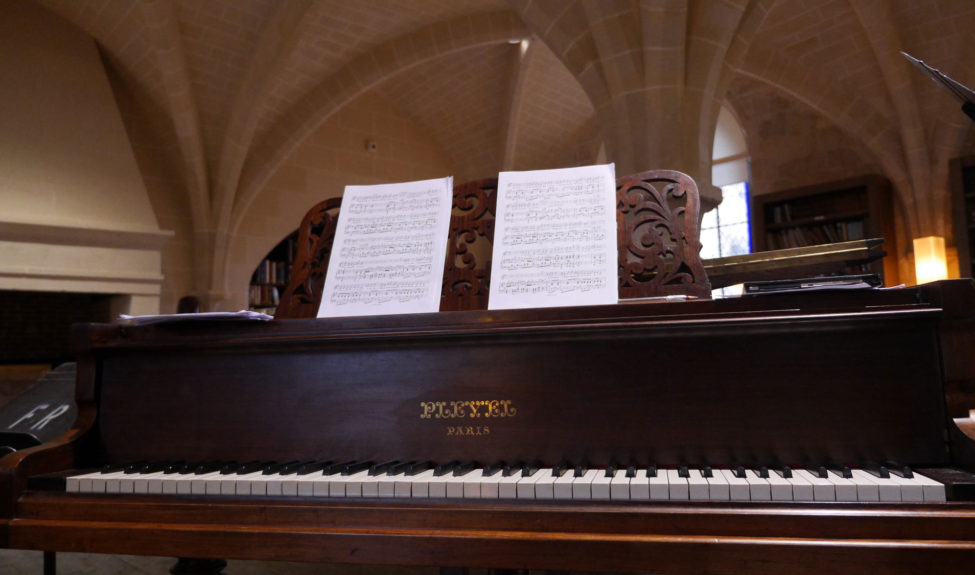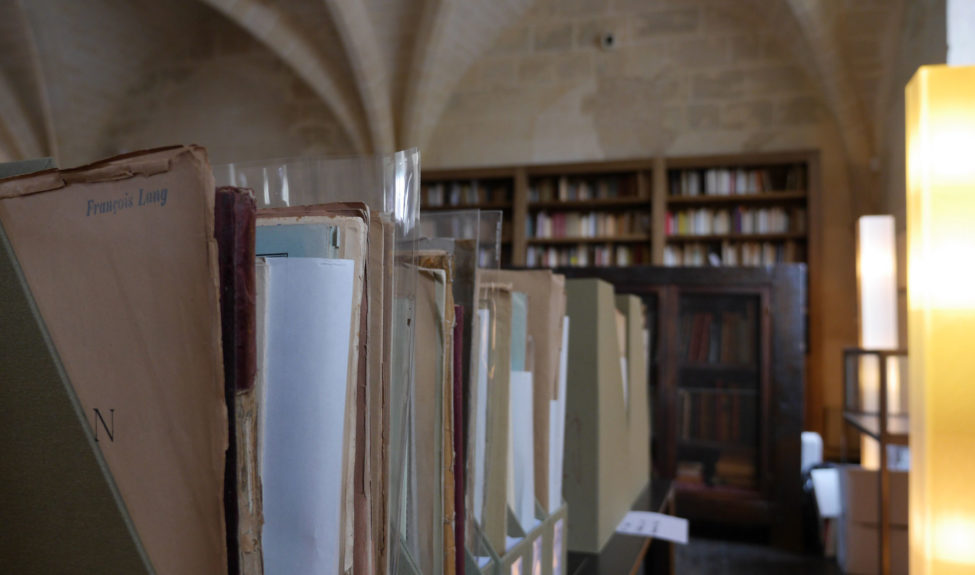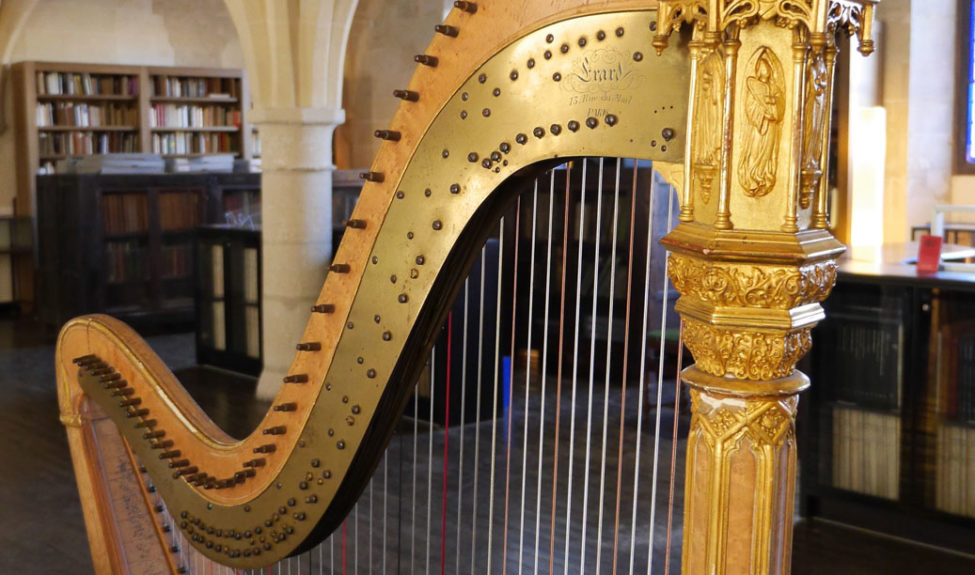Located just above the monks’ kitchen and similarly structured by four columns, this room houses a treasure trove of documentation for musicians and scholars (reference works in musicology, scores, manuscripts…).
During the Royaumont Festival, it is used for temporary exhibitions supplementing various aspects of our festival programming.
en savoir plus
Built around the remarkable collection of music-related manuscripts and printed material amassed by pianist François Lang (1908-1944) in addition to his working library, the François-Lang Musical Library provides artists and scholars with a very special place to work.
Located on the first floor of the kitchen building, the room was probably originally accessed via an external wooden staircase attached to the building’s West gable, in the lay brothers’ passageway. Well lit by three South-facing bay windows, but traversed from floor to ceiling by the medieval fireplace’s flue, its original function is not well understood. Was it perhaps used by the cellarer, who basically served as steward for the monastery, to keep his accounts and ledgers? According to the Sisters of the Holy Family of Bordeaux, “Monsieur Vernier, the architect, cannot accept that this was the monks’ library; the original construction work is too unrefined. He deems it must have been a pantry or a storeroom. The monks may however have gradually moved their books to this place towards the end of their stay as the rest of the abbey was in serious disrepair. And this may explain why people in the village still call it the library.. .” In 1725 the library was indeed located above the warming room…
When the abbey was turned into a textile mill, this room was used for packing and shipping. It was open to the West cloister gallery via a slide or ramp used to shift bales to the ground floor to be loaded on carts In 1853 the mill became a fabric printing venture and the sample makers set up operations on this floor, while the etchers’ workshop was accommodated in the contiguous cloister attic. In 1869, the place was significantly overhauled. The shed roofing above the cloister galleries was destroyed, making way for three windows in the North wall, symmetrical to the three pre-existing bay windows to the South. The masonry was cleaned, wood flooring put in, and the room became known as the Salle Notre-Dame de Toutes Grâces, used for meetings and ceremonies such as the taking of the cloth. The attic above was then turned into a dormitory.
After the Second World War, Henry and Isabel Goüin decided to display the collection (musical documentation, art and musical instruments) left by their brother and brother-in-law François Lang, who had died in Auschwitz in January 1944, turning the space into a private music room dedicated to his memory. In 2007 the Royaumont Foundation acquired this collection, keeping it in this symbolic place, but with a view to letting scholars and musicians use it. This is why major work was undertaken from January 2008 to April 2009, that led to the opening of the François-Lang Musical Library in 2009, now with restored roofing and South façade buttresses, a renovated staircase, and six studios for artists.














